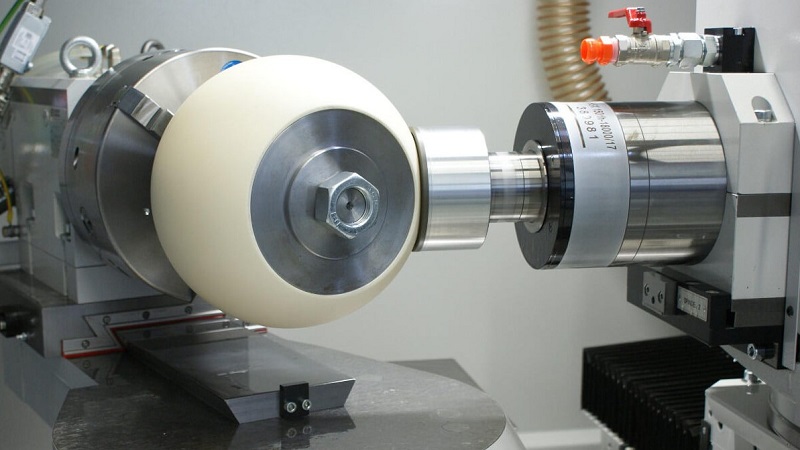Although ceramics are made from hard metal oxides or nitrides, materials like silicon carbide (SiC) can also be classified under ceramic “family.” Ceramic machining is used to manufacture a wide range of mechanical, electrical, and optical appliances. Grinding and dicing services are types of machining operations. This article discusses types of machining operations in detail.
The machining process requires the ceramic substrate to be wax mounted onto glass surfaces. After mounting the substrate, ceramic material is cut using pressurized water streams which flow through diamond blades.
Wafer Dicing
One of the machining processes, wafer dicing, is used for separating dice from a wafer of semiconducting material. The dicing process can be carried out various techniques such as scribing and breaking, laser cutting operations, or mechanical sawing. Once the dice is separated from wafer, residual silicon chips are encapsulated in chip carriers to be used in a variety of electronic applications.
For easy handling of dicing process, wafers are mounted on a film frame with the help of tape. Or, if you want precise dicing, these wafers can be mounted on the glass with the help of wax. Dicing services by at GDSI includes several types of operations, such as:
Bevel cutting: The target substrate is cut into V-shaped groove or chamfer, using Bevel cutting.
Burr control: Wafer dicing can also be carried out using a combination of machining tools and speeds. These can help formation of burr on the target material’s cut edge.
Chip control: to control chipping resulting from dicing, certain factors are monitored. By keeping an eye on feed, speed, and coolant flow, etc. it could be ensured that edge chipping levels remain well within specifications.
Scribing: As described in the beginning of article, scribing or marking the wafer can help in subsequent breaking operations.
Wraparound metallization: to offer better grounding properties in microwave circuits, wraparound metallization is used.
Cleaning and packaging: once the dicing process is completed, the system is cleaned thoroughly to ensure that it is all set for packaging and can be delivered to customers in its best form. Sometimes, the target substrate can be coated with a protective layer before dicing begins.
Surface Grinding
Ceramic Machining utilizes surface grinding for common refining and smoothing process. Most of us have witnessed this process if they are in construction industry. In this process, a grinding wheel or disc smoothens the roughness from the target material’s surface. Grinding helps in refining the workpiece’s edges and surface. At GDSI, these three types of surface grinders are used:
Grinders with horizontal spindles: as the name suggests, in this grinding type, a flat edge of the grinding wheel performs on a workpiece, resulting in high-precision grinding of the object.
Grinders with vertical spindles: as opposed to horizontal spindle grinders, these grinders have a vertical spindle or wheel-face. With such setting, they can remove large amounts of material at a time. In this type of grinding, instead of the edge of grinding wheel, its face comes into contact with the targeted surface.
Single- or double-disc grinders: to speed up the grinding process, the disc grinders can be aligned horizontally or vertically. With such setting, they can grind two sides of the workpiece at the same time.
GDSI
If you deal in ceramics and silicon industry, it is inevitable to seek grinding and dicing services. Having an experience of over a decade, GDSI grinding & dicing services Company is a reputable name in the field of ceramic machining.
